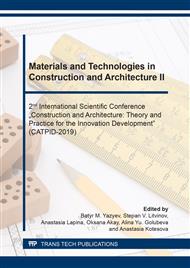p.471
p.477
p.482
p.491
p.496
p.505
p.510
p.515
p.521
The Influence of the Temperature Gradient near the Crack Surface on its Stability under Steady-State Thermomechanical Effects
Abstract:
The development of methods for predicting the reliability of structural elements based on brittle fracture criteria is a rather complex mathematical task. This is due to the fact that these criteria are usually obtained in the framework of the mathematical theory of cracks, the boundary problems of which allow a limited number of exact analytical solutions. To this we must add that the brittle fracture of materials with disc-shaped circular fractures has been studied in thermomechanics and in the kinetic theory of strength, from our point of view, is not enough and research in this area seems to be relevant to us. In this regard, in this work, within the framework of the linear theory of elasticity, two cases of external impact on a material containing a circular disk-shaped fracture are considered: mechanical, in the form of a uniaxial tensile stress, and temperature, in the form of a temperature gradient in the region of a material containing a circular disk-shaped crack destruction. From the extremum condition, brittle fracture criteria such as the Griffith criterion are obtained both for the case of only mechanical loading of the material with uniaxial tensile stress, and for the case of only temperature exposure of the material in the form of a local temperature gradient at the crack surface.
Info:
Periodical:
Pages:
496-504
Citation:
Online since:
December 2019
Authors:
Keywords:
Price:
Сopyright:
© 2020 Trans Tech Publications Ltd. All Rights Reserved
Share:
Citation:


